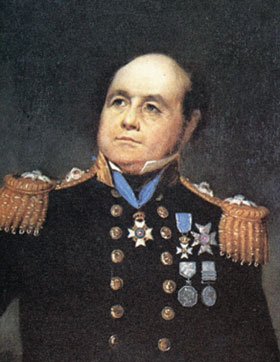Two Ships and 129 Men Missing Without Trace
So screamed the mid-19th century headlines when the ambitious polar expedition, led by the aging Sir John Franklin, failed to return after yet another abortive attempt to find the elusive North West Passage across the top of Canada.
Unlike Antarctica, exploration of the Northern Arctic began thousands of years ago with the Inuit tribesmen and by Europeans as early as 400 BC when the Greek, Pytheas, discovered Thule. Late in the first millennium, the Norwegian viking, Eric the Red explored Iceland and Greenland followed by Dutch, Russians and Englishmen.
The primary motivation for these exhaustive and expensive explorations was to attempt a passage from the North Atlantic through to the Pacific. Such a passage, it was postulated, would greatly reduce the travelling time to the rich trade regions of Asia and avoid the then current, treacherous routes via Africa and Cape Horn. Over a period of four hundred years, some of the world’s most famous seafarers, including Lieutenant James Cook, attempted this journey, striving to make the passage from either end. Every effort was thwarted by the impenetrable barrier of ice, including the best-known catastrophe of polar exploration, the 1845 mission of Sir John Franklin.
Knighted by King George IV in 1823 after a patchy naval career, Franklin was appointed Governor of Tasmania in 1836. His reward for attempting to reform the barbaric penal colony there was removal from office in 1843, an event which probably drove him to accept the challenge to find the Northwest Passage and make history and shed his reputation for mediocrity.
Franklin’s subsequent disappearance spawned a minor rush to the region as numerous searches scoured the frozen lands in the hope of turning up some clue to his whereabouts. Most of the larger expeditions were financed by Lady Franklin herself and her devotion to her lost husband generated many stories and ballads that tugged heavily on the heart-strings of English and Canadian society of the time.
For a full decade after his departure, these parties only turned up scraps of debris and a few marked graves. After abandoning their vessels, the Erebus and Terror, Franklin’s oversized, ill-planned expedition staggered on for weeks, probably months, before finally succumbing to hunger, cold and fatigue. Franklin’s final resting place is still unknown.
It wasn’t until 1905 that the legendary Norwegian explorer, Roald Amundsen, eventually completed a three-year journey in his specially prepared vessel, the Gjoa, a tiny 47 tonne former herring boat. Today, despite the vast improvements in navigation and shipbuilding, the Northwest Passage is still a virtually impenetrable waterway and is only navigable for a few short weeks each year. It still takes the hardiest of polar icebreakers weeks to make the journey.

